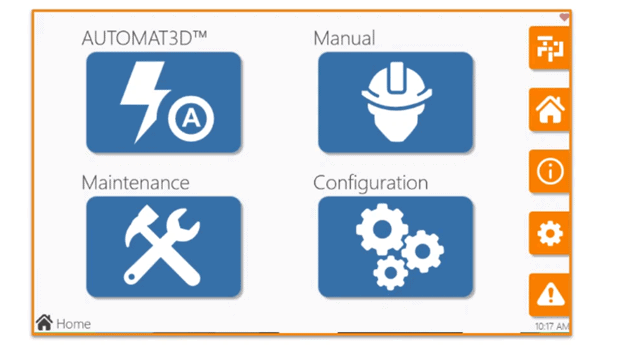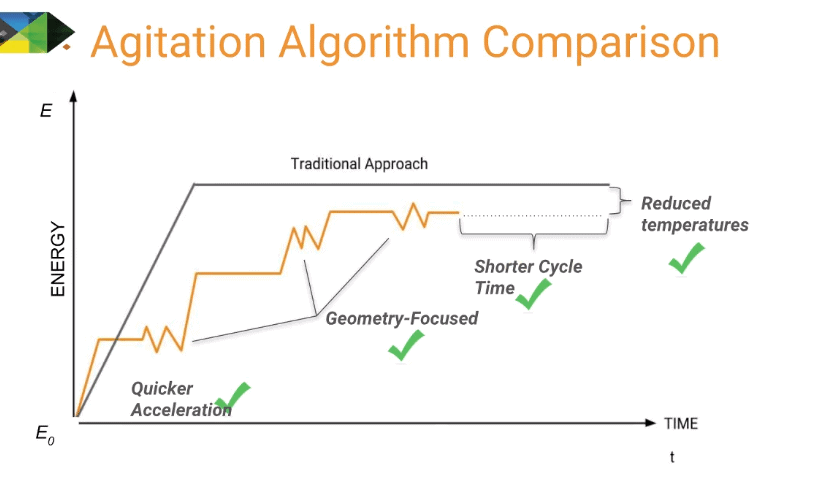AUTOMAT3D: 3D Printing Support Material Software by PostProcess Technologies
 Since the inception of 3D printing, there have been phenomenal, albeit incremental innovations and improvements with virtually every step of the manufacturing workflow. Part Design has Design for Additive Manufacturing (DfAM) procedures and Generative Design, Pre-Printing setup has software like GrabCAD (part slicing/scheduling/monitoring), and the machines themselves have incrementally increased material catalogs, speed, resolution, and repeatability since their inception. However, some of you may have realized that there has surprisingly been a lack of innovation in one important facet of 3D printing – Post-printing (3D printing support material removal).
Since the inception of 3D printing, there have been phenomenal, albeit incremental innovations and improvements with virtually every step of the manufacturing workflow. Part Design has Design for Additive Manufacturing (DfAM) procedures and Generative Design, Pre-Printing setup has software like GrabCAD (part slicing/scheduling/monitoring), and the machines themselves have incrementally increased material catalogs, speed, resolution, and repeatability since their inception. However, some of you may have realized that there has surprisingly been a lack of innovation in one important facet of 3D printing – Post-printing (3D printing support material removal).
PostProcess Technologies has automated this area of 3D printing, which historically solely relied on precise operator knowledge that would leave a company once that operator left or retired. Deemed “tribal knowledge”, this skillset required dedicated operators who, even though they did excellent work, would not be able to have true repeatability due to the nature of work by hand. The only previous workaround to this would be support washing tanks and tumblers, which were never specifically designed or optimized for 3D printings, nor were their settings customizable. PostProcess Technologies has digitized this formerly analog process with three distinct innovations: software, hardware, and chemistry.
In this three-part blog series, I’ll be covering those processes, (software, hardware, and chemistry) starting with a software dubbed AUTOMAT3D.

AUTOMAT3D is the operating system that is identical across all PostProcess machines that come with it including both their support removal systems and surface finishing systems. The software gives you a litany of highly customizable offerings, unprecedented uniformity, and highly efficient throughput.
Monitoring
AUTOMAT3D software has automated alarms and warnings that can be calibrated to your specific needs to minimize or completely eliminate any human error that may come from operating a system (lower water, low PSI, chamber door open, non-optimal pH, etc.).
This software will constantly show crucial information about your parts to optimize temperatures, PSI ranges, maintenance schedules, cycle durations, and agitation settings. It is even possible to remotely monitor your systems via Windows Team Viewer. However, if you do not want your systems connected to the internet for security purposes, they will function offline all the same.
Algorithmic Optimization
AUTOMAT3D has what PostProcess has coined their “Agitation Algorithm” or AGA. The logic behind this is simple – when removing 3D printing support material, the geometry of the support material is constantly changing as it is washed away – so why use the exact same agitation settings throughout the duration of the removal? The same goes for the surface smoothing process – albeit on a much smaller scale. The real value of the AGA for surface smoothing is the spraying movements for the spray systems and rotational settings for the media chambers – essentially, ensuring that you do not over-process or under-process your parts.

Repeatability
Arguably the best feature of AUTOMAT3D software is the ability to create and save specific “recipes” for agitation and wash cycles (on any of the PostProcess systems that come with AUTOMAT3D). This means that you can experiment with different detergent concentrations and agitation settings – specifically controlling options like temperature, PSI, run time, cycle intensity, specific sprayer activation and movement, pH range, and more – to perfectly optimize throughput and cycle times for parts and increase the longevity of your detergents and/or media to decrease consumable costs.
This is all of course, extremely ideal for low volume productions of parts that have similar or identical geometries. All you would need to do is pull up the recipe you created for that specific geometry and material, hit start, and the machine will do the rest.
Note: PostProcess machines are technology agnostic and can even perform support removal for materials that have support materials that are the same as the model – like Stereolithography (SLA). In the image below you can see that there is a specific switch when working with Non-SLA or SLA parts.

PostProcess has several different systems for both support removal and surface finish which are all supported by AUTOMAT3D; be sure to learn more about them in part 3 – hardware. In part 2 we will be doing a deeper dive into the cornerstone of the PostProcess value proposition – Chemistry.
Want to learn more? Check out the PostProcess website or contact us to see how quickly you can achieve ROI with one of these systems.
Related Articles
PostProcess Announces Expaded Channel Partner Coverage Across North America
Material Mayhem: 3 Tips for Optimizing FDM 3D Printing Materials
Stratasys Materials: When to Use Polycarbonate, PC-ABS, and Nylon
About the Author
 Gerald Matarazzo is a certified Additive Manufacturing (AM) Application Engineer, AM Designer, AM Service Engineer, Project Manager, and Lean Six Sigma Green Belt based out of Boston, Massachusetts. Gerald has a B.S. in Data Analytics and began his career in Additive Manufacturing by starting and leading a makerspace turned service bureau in college. Gerald joined the Fisher Unitech team in 2018 with over 3 years of professional AM experience and is the Lead AM expert for the Fisher Unitech New England territory. Gerald is an experienced educator and presenter providing highly customizable, pre-to-post printing turnkey solutions.
Gerald Matarazzo is a certified Additive Manufacturing (AM) Application Engineer, AM Designer, AM Service Engineer, Project Manager, and Lean Six Sigma Green Belt based out of Boston, Massachusetts. Gerald has a B.S. in Data Analytics and began his career in Additive Manufacturing by starting and leading a makerspace turned service bureau in college. Gerald joined the Fisher Unitech team in 2018 with over 3 years of professional AM experience and is the Lead AM expert for the Fisher Unitech New England territory. Gerald is an experienced educator and presenter providing highly customizable, pre-to-post printing turnkey solutions.

 Blog
Blog 